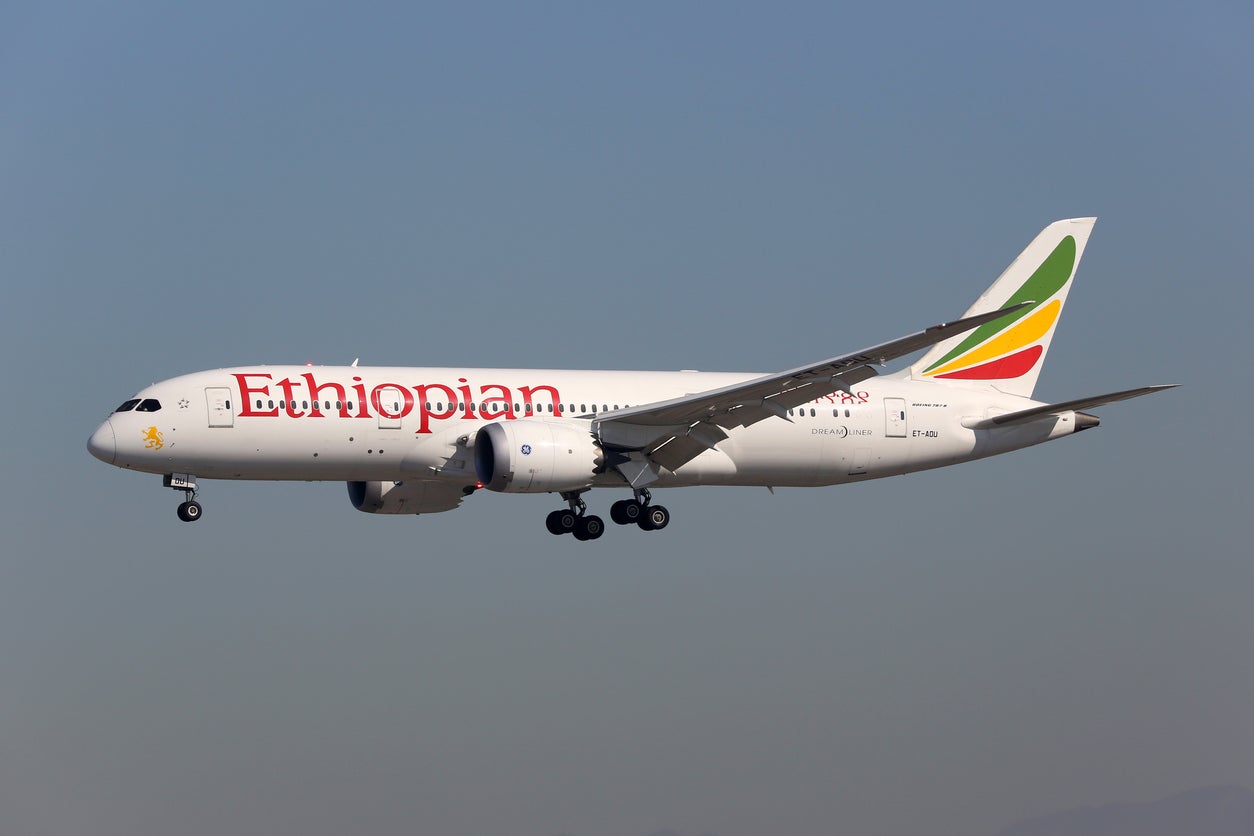Plane talk: Why Ethiopian Airlines is now Africa’s best carrier
While South African Airways aims to shrink to profitability, Ethiopian is expanding its UK links

Your support helps us to tell the story
From reproductive rights to climate change to Big Tech, The Independent is on the ground when the story is developing. Whether it's investigating the financials of Elon Musk's pro-Trump PAC or producing our latest documentary, 'The A Word', which shines a light on the American women fighting for reproductive rights, we know how important it is to parse out the facts from the messaging.
At such a critical moment in US history, we need reporters on the ground. Your donation allows us to keep sending journalists to speak to both sides of the story.
The Independent is trusted by Americans across the entire political spectrum. And unlike many other quality news outlets, we choose not to lock Americans out of our reporting and analysis with paywalls. We believe quality journalism should be available to everyone, paid for by those who can afford it.
Your support makes all the difference.“Break the loss-making cycle and transform the airline into a viable and sustainable entity”: how many times has that sentiment been expressed in aviation? Dozens, and that’s just Alitalia.
The carrier making all the right noises this week: South African Airways (SAA).
“The board has developed and approved a clear strategy and five-year plan to turn the airline around,” said SAA’s chief executive, Vuyani Jarana.
“We need a clean break with the past and a new approach to the future, and that is precisely what we are doing. We are acting with urgency to ensure the viability and sustainability of this crucial national asset.”
A measure I find useful is: how much profit or loss per passenger does an airline make? This year, for example, Ryanair is expected to make an average of £10 for every passenger it flies. Virgin Atlantic has just announced it lost about a fiver per person, due partly to hurricane disruption in the Caribbean and Florida. But SAA lost one-third of a billion pounds last year, and expects the same result again in 2018. That’s almost £50 for each of seven million passengers.
SAA’s cunning new plan is to shrink into profitability, a strategy that has met with mixed results over the years. From next weekend, the double-daily Heathrow-Johannesburg link becomes a single flight (in response, Virgin Atlantic has already announced an extra service on the route from October).
One certainty about airline awards used to be that SAA would win Best African Airline. Not any more. If you want to fly on the continent’s best airline, with the world’s most modern aircraft, then it has to be Ethiopian. During traumas from famine to revolution, the airline has managed to deliver those two elusive qualities: customer service and profit (last year, which was a lean one, it made about £9 per passenger).
From June, Ethiopian steps up services from Heathrow with three extra round trips each week to its Addis Ababa hub.
Hitherto, the airline has flown to Heathrow overnight from Ethiopia, then parked an aircraft at an expensive airport for 14 hours before the return night flight back to Addis Ababa. Ethiopian has had these slots since the dawn of time. When I first flew with the carrier it had some elderly Boeing 757 jets which presumably were fully amortised – paid for – and so the only significant cost was the parking fee.
Today, Ethiopian deploys a brand-new Airbus A350, an expensive asset to be sitting in the drizzle all day at Heathrow. Now some slots have been found at Heathrow to give the airline a degree of flexibility, at least on Saturdays, Sundays and Wednesdays. On those days the inbound morning plane will turn around in three hours, and fly back to Addis Ababa during the day. The Ethiopian capital is exactly the same distance from Heathrow as Washington DC, and takes about seven hours in the air.
A daytime flight will appeal to plenty of people keen on the aesthetic treat of savouring the views of eastern France, the Swiss Alps, the spine of Italy and most of Egypt and Sudan on the way to East Africa, where you arrive just in time for dinner in one of the continent’s more agreeable capitals.
Michael Yohannes, Ethiopian’s country manager in the UK, said: “We are always conscious of what the customers want. We don’t put too much capacity in one place. We make mistakes but we learn from our mistakes and we move forward.”
From October, at least one more UK airport is likely to have a non-stop link to Addis Ababa. Many of the passengers will connect to destinations in southern Africa which used to be the preserve of SAA. With South Africa imposing draconian documentation rules on passengers under the age of 18, even in transit, Johannesburg’s role as Africa’s key hub is being eroded – and SAA’s slogan,“Bringing the world to Africa and taking Africa to the world”, looks as though it is applied to the wrong airline.
Join our commenting forum
Join thought-provoking conversations, follow other Independent readers and see their replies
Comments